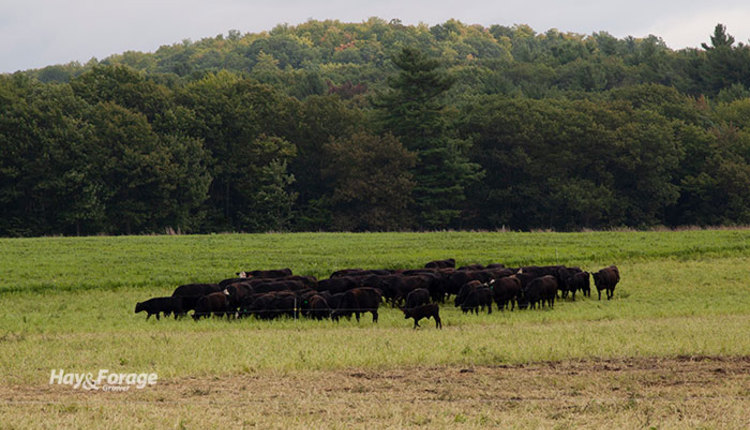Forage paves the road to more profitable beef |
| By Amber Friedrichsen, Associate Editor |
|
|
 Ringing in the new year often encourages people to declare resolutions. Cow-calf producers among this group of goal-setters may resolve to enhance livestock production, and to do this they must optimize forage production. Derrell Peel with Oklahoma State University Extension suggests cattle are ultimately a means to harvest and market forage, and there are some situations in the cow-calf business that may offer opportunities to produce forage of higher value. “The market environment in 2022 may provide more possibilities with reduced cattle numbers favoring weaned calf production and marketing, yet at the same time, higher grain prices and elevated feedlot cost of gain increase the value of added forage-based weight gain on feeder cattle,” the livestock marketing specialist predicts. Feed costs are the greatest expense to livestock production. Therefore, improving grazing management and hay feeding strategies are necessary to maximize forage value on cow-calf operations. Prioritize grazing Grazing is the cheapest way to feed cattle because animals become the harvest machines. While this readily reduces feed costs, pastures must still be managed to ensure adequate forage quality and yield. It is essential to create a grazing plan that accounts for grazing duration, the type of crops being grown, and the stage of production animals are in. “Start early and plan for annual forage production and grazing management,” Peel says. “This must be done in conjunction with plans for cow-calf production, retained stockers, and forage use as a part of cull cow marketing.” Feed hay efficiently Many producers will start feeding hay when the grazing window closes. While the former is nearly two times more expensive than the latter, there are measures that can be taken to make the most of hay’s forage value. “Test hay to know the nutritive value and how the hay will contribute to meeting cattle nutritional requirements,” Peel recommends. “This is done on a pound basis, so it is important to know the weight of round bales,” he adds. Peel also suggests comparing the costs of hay to feed supplements when formulating a herd’s diet. Protein and energy requirements vary at different stages of production, and it may be more economical to incorporate supplements into a ration than to feed animals low-quality hay. Proper storage and feedout practices can promote higher forage value, too. Peel says the longer bales must be stored, the easier it will be to justify investing in a shed, covering, or storage pad. When it’s time to feed hay, evaluate how much animals need versus how much they are getting. An excess of feed will lead to hay waste, causing forage value to decline. “With generally rising input costs, cow-calf producers need to put additional effort into cost management,” Peel concludes. “Managing feed costs will be a key to minimizing cow costs and capitalizing on better cattle market conditions in 2022. It’s not too early to plan the next year of forage management and grazing.”  Amber Friedrichsen Amber Friedrichsen served as the 2021 Hay & Forage Grower editorial intern. She currently attends Iowa State University where she is majoring in agriculture and life sciences education-communications and agronomy. Friedrichsen grew up on her family’s diversified crop and livestock farm near Clinton, Iowa. |
